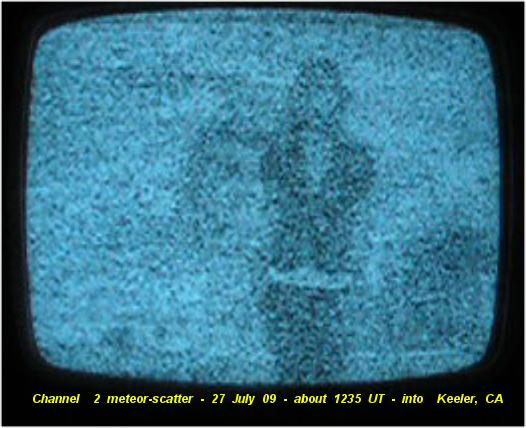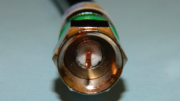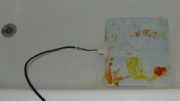One of the key features you should be looking for in a high-quality amplifier is noise figure. We’ve mentioned the term before, and while I could get highly technical, noise figure for all intents and purposes is the amount of noise, measured in dB, that an amplifier adds when it amplifies the signal. It’s impossible to add no noise at all, because even the best, most comples amplifier is going to amplify what it hears and then process out the noise as best as possible. A low noise amplifier is generally considered to have a noise figure of about 2dB or less.
Why you haven’t heard of noise figure before

Noise figure really wasn’t part of the discussion back in the days when television signals were analog. The way analog signals are interpreted, it’s a little easier for a very noisy signal to yield at least some picture. Think back to your younger days. When the signal was weak, you got a snowy picture like the one above. It didn’t really give you all the details but it gave you some idea what you were looking at. Today’s digital signals are all-or-nothing. It’s either a crystal clear picture or a blocky, frozen mess.
Noise figure and digital signals
Noise figure is especially important with digital signals. With a digital signal, it’s either there or it isn’t, but you need to realize that we live in an analog world. There’s no such thing as something purely digital, and when we say something is “there or it isn’t” what we really mean is that “it’s there, to the extent that the computer chips can pick it out of the noise surrounding it, or it isn’t.” That’s an important distinction. A strong signal has to be strong enough to make up for the noise surrounding it or the tuner won’t be able to pick it up. If you add noise to a sketchy signal, you make it harder to tune even if you make the signal stronger. That may not make a lot of sense at first. If your signal is so weak that it’s overwhelmed by noise… and that’s what happens in certain “fringe areas,” adding an amplifier, especially one with a high noise figure, can actually make matters worse.
Will an amplifier even help then?
That’s why we are careful when we make antenna recommendations. It’s very hard to tell whether or not an amplifier will help you. Here’s how you’ll get the most benefit from an amplifier. You need a signal that’s weak enough that you have trouble tuning it. It also has to be strong enough that it can overcome the noise figure of whatever amplifier you attach. That’s a pretty slim margin. Without expensive test equipment it’s hard for an average person to know if they’re right where they want to be.
If you’re looking for the right amplifier or amplified antenna for your home antenna project, we can help! We’ll help you choose low-noise amplification products to make sure you get the best possible experience. Call us with questions at 888-233-7563! If you know what you’re looking for, shop the great selection at Solid Signal.





